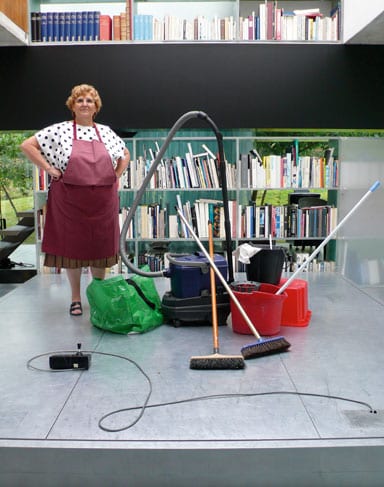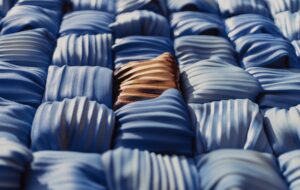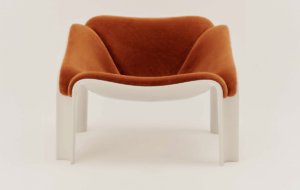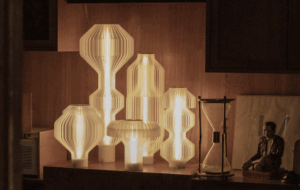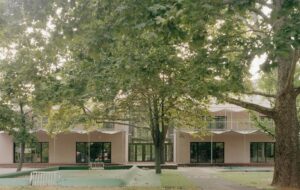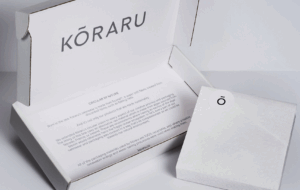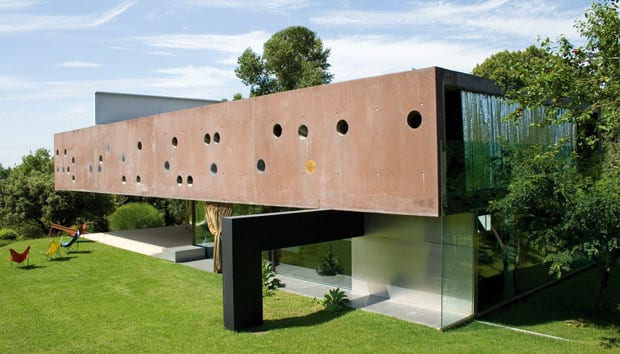
words Sam Jacob
Rem’s Maison á Bordeaux is experienced through the eyes of its cleaner, a woman engaged in a lonely struggle against creeping decay and the absurdities of signature architecture. Sam Jacob watches.
Architectural culture has less to do with buildings, and a whole lot more to do with the reproduction of its own image. Its significance is communicated through media – blogs, magazines, books and academic journals. Each of these media allows a particular view of architecture, but in each case we see a representation of buildings that is skewed to serve a particular agenda. The difference between architecture and building might be described by its mediation, rather than its inherent quality: representation bestows the cultural value of architecture to built fabric. The overpowering effect of media allows us to engage with architectural culture but it also resists alternative views of what architecture might be.
Two films that seek to explore architecture outside these typical media windows were recently screened at the Barbican by the Architecture Foundation as part of its Architecture on Film series. Niklas Goldbach’s Gan Eden and Koolhaas Houselife by Ila Bêka and Louise Lemoine explore two iconic buildings designed at the height of late ’90s Super-Dutchism.
Gan Eden was shot in the derelict Dutch pavilion for the 2000 Hanover Expo, a remarkable structure designed by MVRDV. Koolhaas Houselife also shows architecture after the media storm has passed. It tells the story of OMA’s Maison á Bordeaux through the eyes of its cleaner. In a series of vignettes, we see the iconic late-20th century house from an alternative perspective.
We see all kinds of things broken, falling apart and leaking – as though the house has become a character itself, straining to maintain itself as a piece of extraordinary architecture. As water drips through the ceiling, as the cleaner struggles with a hoover on statement spiral stairs, as books spill out of staircases, we feel at once the absurdity of the design, while understanding its exceptional quality.
The film is also a meditation on the act of cleaning – joining cinematic cleaning scenes like the one in Snow White, where woodland animals help her spring clean, or Anthony Perkins scrubbing the bathroom at the Bates Motel. Here, isolating the act of cleaning as the subject matter is a means of getting critical distance from our normal understanding of architecture. Furthermore, white, machine-aesthetic modernism was in part a response to the dirt, filth and disease of the industrialised city. Light and hygiene and the aesthetic of cleanliness were part of the Modernist utopian project. In this way, we may think of cleaning as an architectural act.
As a bonus, Koolhaas Houselife also includes a short interview with Rem himself. We first see him – somewhat uncomfortably – watching the film. As the interview continues, we can almost perceive the process of assimilation that seems to characterise so much of his work, as though he’s absorbing the critical content and rephrasing it as a polemical position.
The space between architecture and media has shrunk to a point where it is hard to distinguish one from another. The power of the spectacular, fresh image has distorted the ways in which we make architecture – as exemplified by the rise of so called iconic buildings. By prising apart buildings from their typical representation , films like Koolhaas Houselife destabilise architectural certainties and allow us to see things that we thought we knew in new ways. They are examples of media that recognise their role in architectural culture, but resist traditional formats and expectations in favour of less circumscribed ambition. They show un-idealised architectural scenarios beyond the rhetoric of architects or the hype of media. By evading these formulas, they demonstrate opportunities to escape from the feedback loop of architecture and media.
www.bekafilms.it
